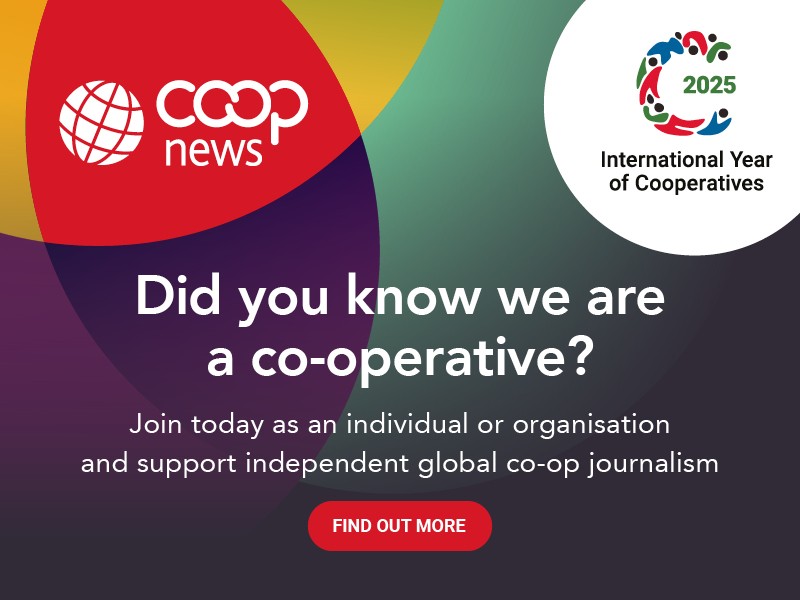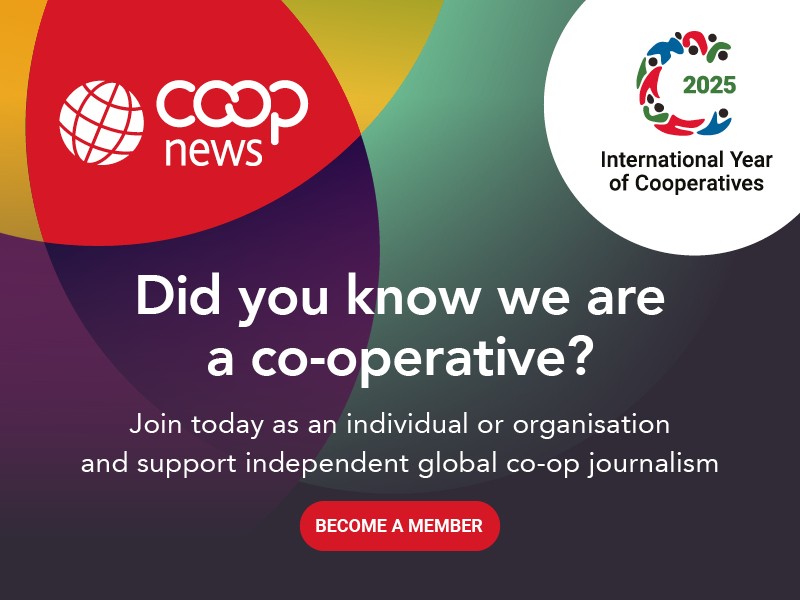This year’s Practitioners Forum, organised by Co-operatives UK, offered insight and best practice from industry experts, with sessions on governance, membership, finance, HR and communications.
In the morning, the membership forum heard from the Co-op Group’s chief membership and customer officer, Kenyatte Nelson, who described the society’s recent efforts to recentre its messaging and business strategy.
Earlier this year, the Group launched its Owned by you, right by you campaign, designed to increase understanding of the co-op model.
The distinct ownership structure, along with co-operative values and principles, means the business can make different choices, said Nelson.
“We are concerned with creating value for you, whereas others are concerned with creating value for other people,” he added. “Membership is our co-op difference.”
Over the past two years, the Co-op Group has increased the number of members from 4.3 million to 6.1 million, and it wants to hit the 8 million mark by 2030.
Alongside its communication campaign, the society has embarked on a mission to promote membership by driving a better value perception beyond pricing and discounts. This includes member prices and special offers, early access to Co-op Live tickets, and the chance to select community causes. Members are also encouraged to vote at the Group’s AGM.
The society is at the beginning of the journey, Nelson said, and needs to keep maintain its messaging to drive the membership campaign forward.

He also had some tips for co-ops big and small looking to attract more members. These include:
- Ask what you want the business to look like, long-term
- Consider ways to become more bold and brave in your thinking
- Think inside-out – get colleagues excited about the value of membership, to pass that on to people they meet through the day
- Think holistic – it’s important for the whole business to adopt this
- Think pan-co-op – making sure you think about this in the context of all business divisions and community engagement
He also encouraged participants to define their co-op’s difference, understand what members want/need; deliver meaningful/differentiated value, and answer questions in an honest way.
In another session, Amrit Singh, creative director at Rebel Creatives, discussed ways to use social media to connect with customers, build brand loyalty, and drive sales.
Singh (pictured, main photo) argued that a competing brand story creates an emotional connection with an audience and differentiates a business from its competitors. Smaller co-ops often lack the resources needed to invest in technology, said Singh, but free online tools and resources such as Canvas can help them create professional visuals.
When to post is another important question, said Singh: midweek mornings, weekday afternoons and weekday evenings are all key time slots.
He also advised practitioners to consider if new platforms are worth the time and effort.
Small co-ops can also choose to repurpose assets to create engaging stories. In another session, Singh described how this can be done by sharing throwback content. Repurposing, he said, can save time and resources, increase engagement, increase brand consistency, reinforce key messages, eliminate content fatigue and celebrate previous projects.
Before doing so, co-ops should conduct content content audits and gather all content in one place, exploring shares and engagement rates to see which content is worth re-sharing.
“Everyone in your team should have access to this,” he told participants, warning that “repurposing doesn’t mean copying and pasting”. It requires repurposing and re-editing, using different captions, hashtags and images to maximise impact. The same applies to videos, which need to be edited before being reshared.
Co-ops can also use user-generated content – which is considered more authentic than brand-generated content – or collaborate with social media content creators to reach new audiences, build trust and create diverse content.
Regarding videos, Singh advised participants to focus on authenticity rather than overproduce, while prioritising lighting and audio quality. He added that sneak peaks, teasers and “A day in the life of…” videos are likely to perform well.
His final tips included experimenting with AI to save time; staying updated with latest trends; using and amplifying tools co-ops already have; repurposing best content and showcasing successes; and sharing content at the same time on the same day.
Another session, on create inclusive and accessible workplaces, was led by Jon Prashar from Enhance the UK, a user-led charity with a mission to change the way people view disability.
Prashar described the social model of disability, which focuses on the barriers that society puts in the way of disabled people. He offered advice on how to engage with disabled colleagues, from the use of inclusive language and terminology, to tried and tested methods for encouraging disabled people to work for a co-op.
Participants also discussed the “Dos” and “Don’ts” related to various HR functions, such as training and development, difficult conversations, role models and mentoring.
Prashar’s tips included using inclusive language, ensuring the right culture is in place for people to feel included, avoiding making assumptions or judgements, having an open communication about needs, making adjustments if required, having difficult conversations early on and conducting impact assessments to consider disproportionate effects some measures might have on disadvantaged groups.
He added that “language is a superficial mechanism”, explaining that he was “far more interested in someone’s attitude”.
“You get more latitude with the language because you get the attitude right,” he said. “A lot of training done to get people to use the right language to keep doing the wrong things.”

